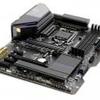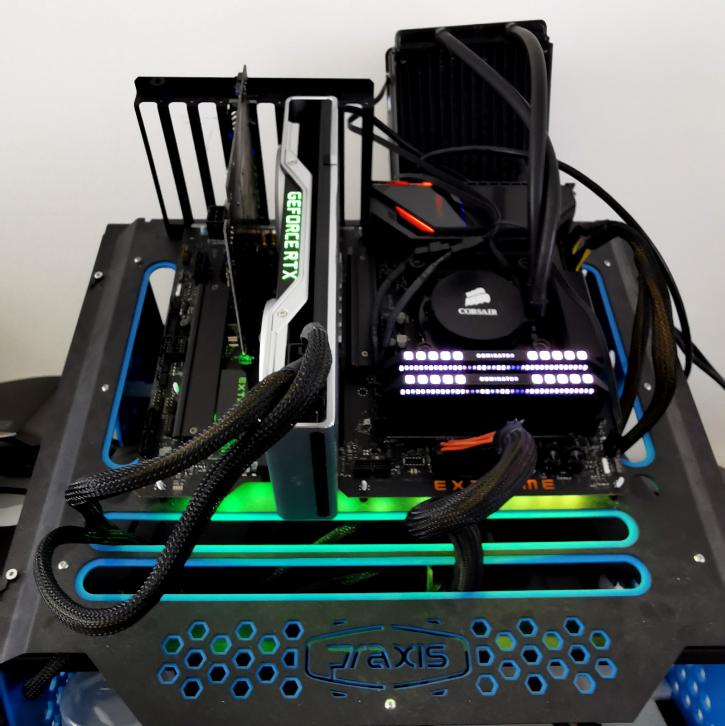Final Words & Conclusion
Final words & conclusion
We're not exactly sure why this motherboard is labeled EXTREME, as really it's a mainstream Z590 product. This shows in the performance. It is a bit all over the place due to swiftly changing power states. With long-term CPU load, all core load the product will definitely be slower compared to the more premium boards. However, you can tweak such matters in the BIOS, of course. We cannot complain about the 200 USD this board costs, though; how relevant the Z590 platform over Z490 really remains a trivial debate. Most Z490 motherboards will be PCIe 4.0 compatible (with Rocket-Lake) after a firmware upgrade. The leaves as the difference an x8 lane uplink from chipset towards the CPU and vice versa, as well as USB gen 3.2. The differences end there, though. ASUS did add four M2 slots; however, one can be connected directly to the CPU at 4x lanes would offer full Gen 4.0 x4 bandwidth. The ones connected through the Z590 chipset are PCIe Gen 3.0 based (for me, no biggy, though).
DDR4 memory
For Rocket Lake-S and 10th Gen Intel procs) and DDR4, we always say, volume matters more than frequency. A 3200 CL16 to 3600 CL18 MHz kit is fast enough overall for all your needs. Higher frequency memory is more expensive and does offer better bandwidth, but the performance increase in real-world usage will be hard to find. Unless you transcode videos over the processor a lot, as always, my advice would be to go with lower clocked DDR4 memory with decent timings, but get more of it. Don't go for 8 GB; get two or four DIMMs, and in total, a minimum of 16 GB. We think the current sweet spot is 3200 MHz (CL14/CL16) or 3600 MHz CL16/CL18).
Performance & tweaking
Temps/TDP remains icky to judge but is manageable when you apply proper LCS. We recommend the same for the more high-end Ryzen 5000 processors as both brands benefit from that nicely chilled heat spreader. At the OC levels for RKL, you are looking at 1.35V and higher needed on that CPU core for a decent tweak; however, pretty similar for AMD, tweaking 8-core or higher processors is more difficult as you are bound to run into core limitations, heat, and there it is again .. power consumption. At 5300 MHz / v1.53, we're passing 450 Watts. That's not sane. All core 5200 MHz / 1.43V draws 410 Watts (PC just CPU under load). With a processor that already runs in that 5 GHz domain, you also need to wonder if you want to tweak it at all, as really, the best configuration is already there at defaults. Regardlessly, if you like to do so, LCS will probably get you to 5.2~5.3 GHz (all cores) depending on ASIC quality, cooling, mobo, and power supply. Tweaking wise you increase the CPU voltage and multiplier, and you are good to go. Another plus for the Intel platform is that over the years, they have been able to refine their memory controllers, pop in anything XMP 2.0, and you have a 98% chance it'll work straight out of the box with high-speed memories. However, the effect of speedier frequency memory is far less significant, so opt volume would be my advice. We'd always suggest going with a nice affordable 3200 or a 3600 MHz kit at low latencies. Currently, we feel 3600 Mhz is the new norm and sweet-spot, though. The infrastructure that Z590 offers is sound and has proven to be reliable and easy to use. But if pricing is a thing, I'd even recommend you Z490 over Z590.
Power consumption
With eight cores, you get a 125 Watt TDP processor. But as explained, it all is a little more complicated these days. Intel applies a secondary power stage where the processor can run twice the TDP value for a pretty long time. That with the IPC increase, Cypress cove cores get the holy grail for added threading performance; however, it makes energy consumption peak with higher values during that long boost. The idle system with a GeForce RTX 3090 installed / 16 GB memory / SSD and the Z590 motherboard hovers at roughly 65 Watts. That's okay, really, but the load values are significantly different. When we stressed the processor 100% run, we reach approximately 275 Watts with this 8-core processor (for the entire PC with GPU in idle).
Conclusion
I think that at 200 USD, this board is a fair offering. Yes, you do not receive the beefiest VRM, but 14 phases backed by 50A power stages still is plenty enough, even for a mild tweak. You will, however, forfeit on Thunderbolt 4, one M2 slot, and AX WIFI. But that is a fair tradeoff. I also find it fascinating that this board is substantially lower in power consumption, which's for two reasons. The first being, this board follows pretty strict reference settings,e socially on multi-threading on long-duration load, it'll clock down to reference values. And that saves energy. Next to that, missing chips like AX WIFI and Thunderbolt all normally need power; there's not present and in edile that immediately shaves of say 15 Watts. This board also consumes 25 Watts less than the premium board on the top end of the spectrum with all-core loads. Trivial, we know. But it's noticeable and measurable. Overall, you'll get most basics covered, very decent performance, three M.2 slots with heatsink, sic SATA3 slots, and a handful of USB 3 connectors. In the end, the new ASRock Z590 Extreme really isn't extreme, but certainly potent enough for what it needs to be at that 200 USD pricing. We had no stability issue either. We popped on the memory, flashed the BIOS to the latest available, and (as)rocked onwards. So while this board is a bit more baseline, we can also state there's nothing wrong with that.
Handy related downloads:
- Sign up to receive a notification when we publish a new article
- Or go back to Guru3D's front page.




